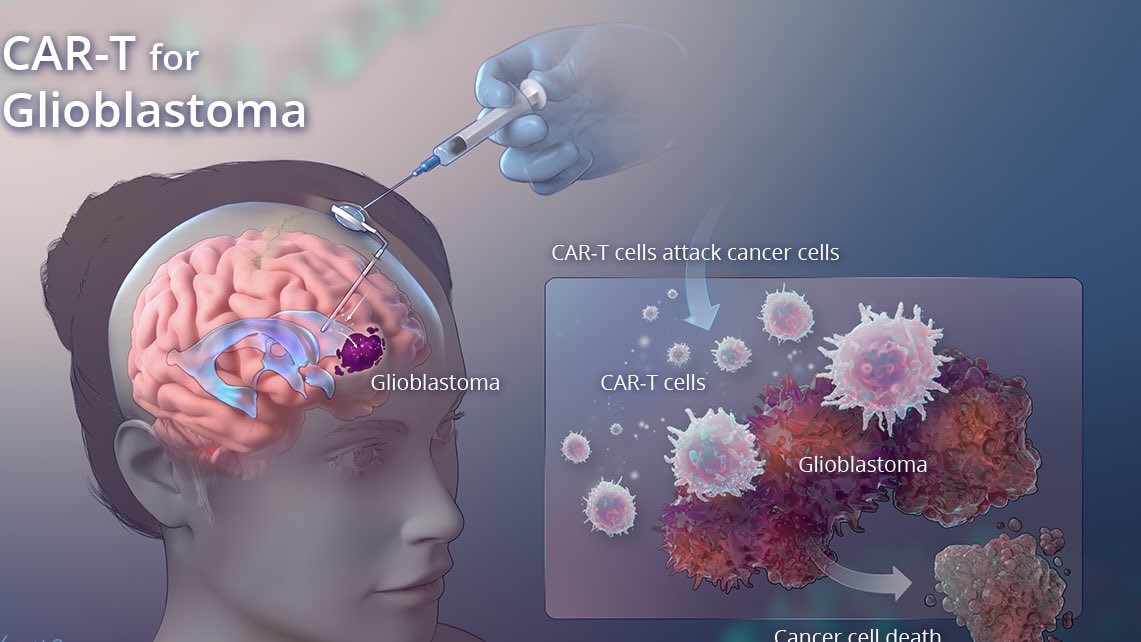
Shahrin Ahmed: CAR-T cells as a new treatment for Glioblastoma
Shahrin Ahmed, Medical specialist in oncology at the Canadian Cancer Society, shared a post on X:
“CAR-T cells are used in a new treatment for Glioblastoma that targets brain tumors from multiple angles.
The malignant brain tumor that occurs most frequently in adults is glioblastoma. This aggressive tumor has not been permanently removed by any treatment to date.
Tumor growth is hindered by the tumor cells’ diversity and favorable microenvironment. A new immunotherapy has been developed by scientists that not only fights against the tumor but also turns its environment against it.
Immunotherapies against cancer have seen new momentum brought by CAR-T cells for some time now. To recognize structures on cancer cells, experts reprogram the patient’s T-cells in the lab. A receptor called chimeric antigen receptor (CAR) aids in this process.
The T-cells search for and eliminate cancer cells once they return to the body. Certain forms of leukemia have already experienced significant success with this method.
The success of CAR-T cells is hindered by solid tumors, particularly brain tumors. Getting inside a tumor is a challenge for cancer hunters. Not all cancer cells are able to be recognized and attacked by T-cells based on their structure. Solid tumors in human tissue are protected against immune system attacks by their microenvironment.
The occurrence of these brain tumors is unfortunate, and they are usually reoccurring even after surgery and treatment. Reprogramming the patient’s own T-cells into CAR-T cells in the lab could use the time gained from a surgery.
The tumor’s ability to send signals allows it to transform immune cells, specifically microglia and macrophages, into enemies of their own body. They prevent the immune system from attacking the cancer by not attacking it themselves.
All of the cancer cells were successfully eliminated by the CAR-T cells. Lymphoma, a cancer of the lymphatic system, was also tested by the research team. These tests showed that the treatment was also promising.
To avoid side effects on the rest of the body, it’s recommended to inject the treatment locally instead of delivering it through the bloodstream.”
More posts featuring Shahrin Ahmed.
-
ESMO 2024 Congress
September 13-17, 2024
-
ASCO Annual Meeting
May 30 - June 4, 2024
-
Yvonne Award 2024
May 31, 2024
-
OncoThon 2024, Online
Feb. 15, 2024
-
Global Summit on War & Cancer 2023, Online
Dec. 14-16, 2023
